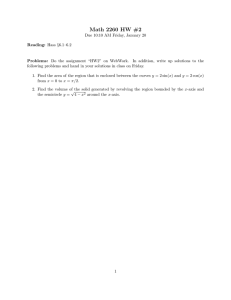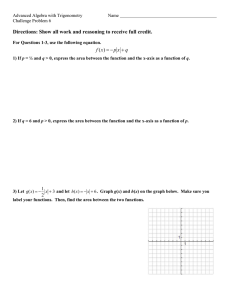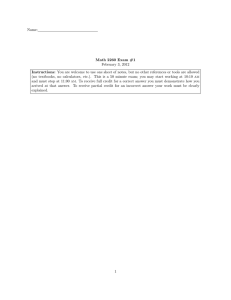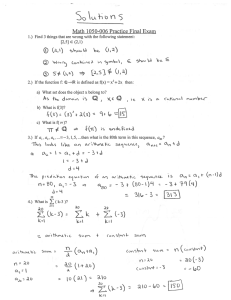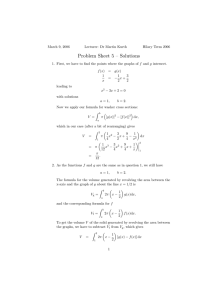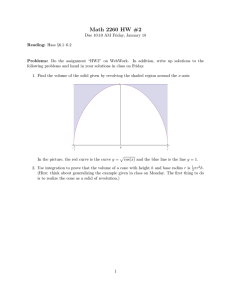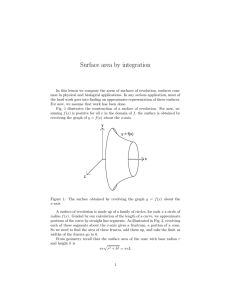§ 8.2 Area of a Surface of Revolution
advertisement
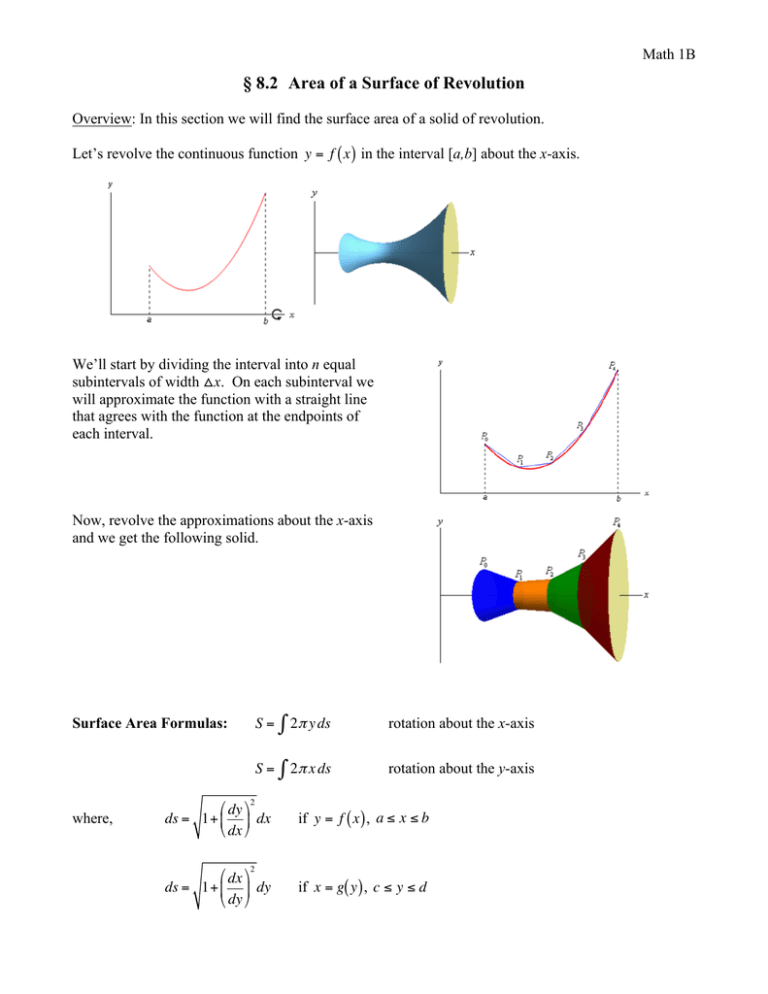
Math 1B § 8.2 Area of a Surface of Revolution Overview: In this section we will find the surface area of a solid of revolution. Let’s revolve the continuous function y = f ( x ) in the interval [a,b] about the x-axis. € We’ll start by dividing the interval into n equal subintervals of width △x. On each subinterval we will approximate the function with a straight line that agrees with the function at the endpoints of each interval. Now, revolve the approximations about the x-axis and we get the following solid. Surface Area Formulas: S= ∫ 2π y ds rotation about the x-axis S= ∫ 2π x ds rotation about the y-axis 2 where, ! dy $ ds = 1+ # & dx " dx % 2 ! dx $ ds = 1+ # & €dy " dy % € if y = f ( x ) , a ≤ x ≤ b if € x = g( y ) , c ≤ y ≤ d € Think of 2π y or 2π x as the circumference of the “band” that is generated when revolving a section of the curve of length ds around the x-axis or y-axis, respectively. Example: Find the surface area of the portion of the sphere generated by revolving the curve 1 y = 1− x 2 , 0 ≤ x ≤ , about the x-axis. 2 € € Example: Find the surface area generated by revolving the curve x = 1+ 2y 2 , 1 ≤ y ≤ 2 , about the xaxis. € € Example: Find the surface area generated by revolving the curve y = 3 3x , 0 ≤ y ≤ 2 , about the y-axis. € € Example: Set up an integral for the surface area generated by revolving y = x 2 , 0 ≤ x ≤ 2 , about the a) x-axis € b) y-axis €

